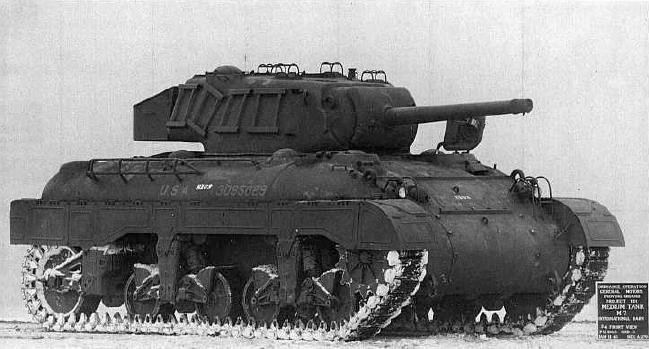Type Medium tank Produced 1942 Weight 53,950 lb (24,470 kg) | Place of origin United States No. built 7 | |
 | ||
Manufacturer International Harvester Corp. | ||
The Medium Tank M7 was originally conceived as an up-gunned replacement for the Light Tank M3/M5. The project was supposed to mount the same 75mm armament as the M4 Sherman while retaining the light weight and maneuverability of the M3 Stuart; however, during development the weight of the prototype surpassed the US Army's standard for light tanks and crossed into the medium category and was renamed. The M7 had significantly less armor than the M4 Sherman, boasted no greater firepower, and held only a slight advantage in top speed. For these reasons, and because the M4 was already battle-tested and in full production, the M7 was put aside shortly after completing trials.
Contents
Development
On January 1941, the Armored force prepared a list of characteristics for a new light tank. It was assigned the designation T7. During the development program, its weight increased from 14 to almost 27 tons. A more apt classification was thus given by OCM 18522, dated 6 August 1942, which standardized the T7E5 as the M7 medium.
Classifications
Testing
Test revealed that the produced vehicles were heavier than anticipated at 28 to 29 tons fully stowed. This reduced performance and production was halted until it could be rectified. Analysis of the problem indicated that it was caused by castings being thicker than specified. Six of the production tanks were then modified to use the lightest castings possible and their power trains were revised to improve performance. The modified vehicles were referred to as M7E2s in some documents. Testing of the modified vehicles revealed improved performance but only at lower speeds and that the performance was considered inferior to the M4A3 medium tank. The 6 modified vehicles and the remaining 7 were accepted as M7 mediums bringing the total run to 13 tanks. Thus production acceptance records show only a total of 7 tanks.
